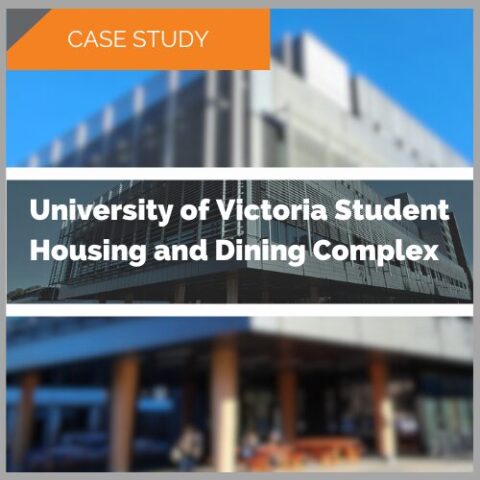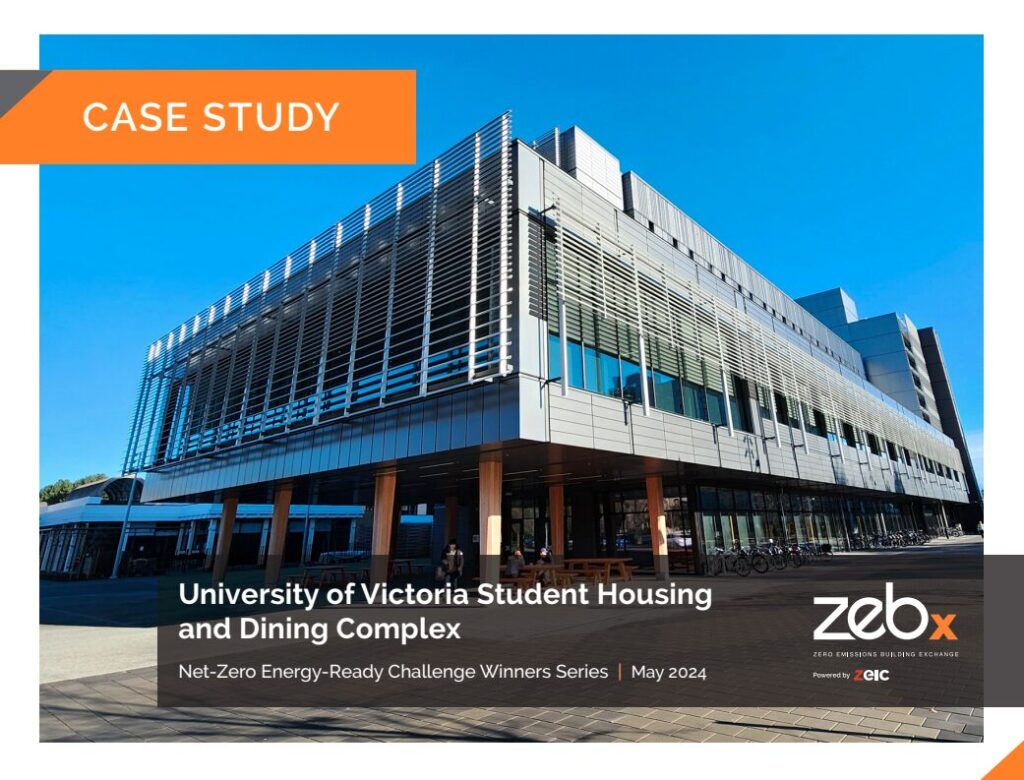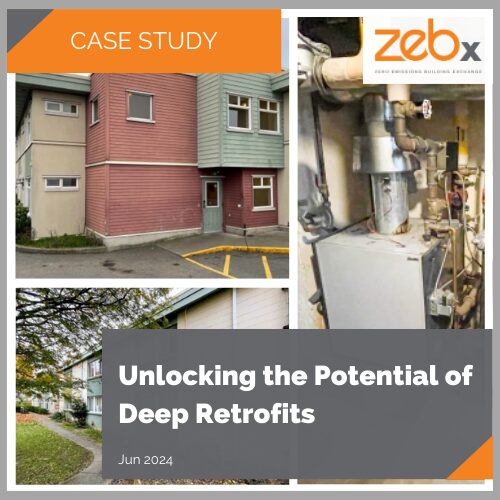
Video: High-Performance Prefab – The Future of Construction
May 1, 2024
May 2024 Decarb Lunch: Resilient Code Updates – Cooling for Part 9 Homes
May 15, 2024
University of Victoria Student Housing and Dining Complex
Net-Zero Energy-Ready Challenge Winners Series
Buildings are the biggest source of emissions in large urban centres like Vancouver and Victoria and this is almost entirely due to burning fossil fuels for space heating, hot water heating, cooking and fireplaces. At the University of Victoria, buildings represent an astonishing 97% of the campus’s emissions, 92% of which are due to the burning of gas, diesel and heating fuel. The University has committed to reduce its emissions 50% by 2030 and achieve net zero emissions by 2040 (relative to a 2010 baseline). Prior to the completion of the first phase of this project, the University had reduced emissions by 30%. To achieve its 2030 and 2040 targets, the University concluded that all new buildings must be near-zero emissions (all-electric) and the campus’s gas-fired district energy system (owned and operated by the University) must be decarbonized.
The new student residences were the largest capital project in the University’s history. They presented the University’s Campus Planning and Sustainability team with a golden opportunity to follow through on the University’s commitment to climate action. Until this project, the University had targeted LEED Gold for its most recent projects. For this project, the University decided to pursue both LEED Gold (v.4) and Passive House certification. In the absence of the Province’s new Zero Carbon Step Code, requiring Passive House certification (Primary Energy Renewable pathway) was determined to be the most effective way to target emissions reductions.
A major challenge to achieving this goal was the very large commercial kitchen in one of the two buildings and the high concentration of students residing in the two buildings. Ultimately, air-source heat pumps were the technology that contributed the most to the emissions reductions.
With these two new buildings, the University increased the number of beds on campus while reducing the campus’s overall emissions. This is because the climate-friendly, 783-unit complex replaced three older emissions-intensive buildings including two residences comprising 162 units in total. With an increased capacity of 621 beds, the University is also better able to meet its live-on-campus guarantee for first-year students.







